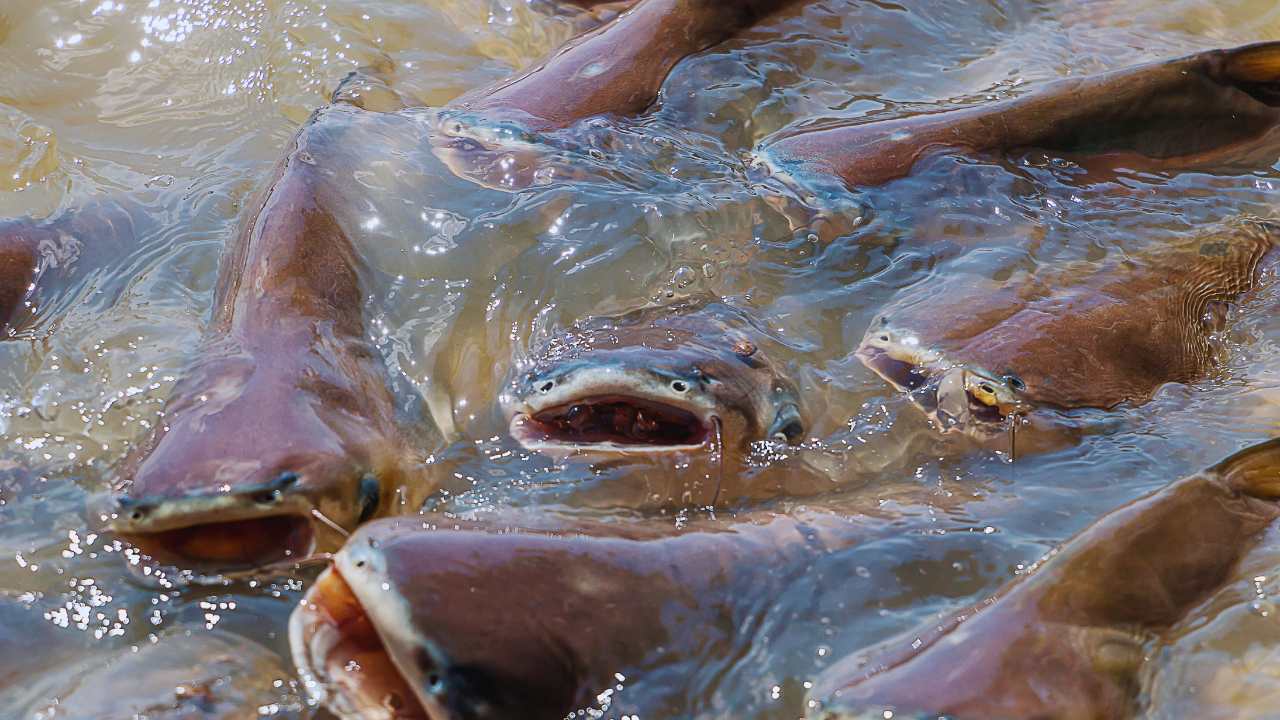A growing number of people are choosing catfish for aquaponic systems because they provide a special blend of hardiness, flexibility, and practicality. Catfish are a diverse species that are essential to preserving the quality of the water and encouraging the establishment of healthy plants. Adding catfish to your aquaponics system can improve its overall productivity and efficiency, regardless of the size of your commercial operation or personal garden. This post will discuss the benefits of catfish for aquaponics, their role in water management, and how to successfully add them to your setup.
Why Should Your Aquaponics System Use Catfish?
In aquaponics, catfish are highly prized for a number of reasons. Because of their hardiness, they may flourish in a variety of water conditions, which makes them ideal for aquaponic gardeners of all skill levels. Catfish are another species that grows quickly and can be a reliable source of protein for both domestic and commercial use. They can reach market size really soon. They also tolerate temperature changes and low oxygen levels, which lessens the requirement for stringent environmental controls. Because of their adaptability, catfish are a great option for anyone wishing to build an aquaponics system that is low-maintenance and sustainable.
Catfish’s Function in Preserving Water Quality

The ability of catfish to preserve water quality is one of the main advantages of utilizing them in aquaponics. Catfish release excrement that is rich in ammonia while they eat. This ammonia is converted by beneficial bacteria in an aquaponic system that is in balance into nitrites and finally nitrates, which are vital nutrients for plant growth. This organic process forms a closed-loop system that is advantageous to your crops and fish alike by keeping the water clean and giving your plants a steady supply of nutrients. For this reason, catfish are essential to the cycling of nutrients, which improves the aquaponic system’s general health and output.
How to Include Catfish in Your Residential Aquaponics System
A home aquaponics system must be carefully planned and considered when include catfish. To begin with, select a tank size that will provide the fish plenty room to grow in comfort. Since catfish are known to live on the bottom, it is best to have a tank with more surface area. Make sure the filtration system in your tank is strong enough to handle trash and keep the water clean. Because they are omnivores, catfish may eat a wide range of foods, including worms and other organic stuff in addition to commercial pellets, which lowers the cost of feed. But watch out for overfeeding, as this can result in bad water quality and health problems for the fish as well as the plants.
Commercial Aquaponics with Catfish: A Sustainable Option
There are many benefits to using catfish in commercial aquaponics systems. Their robustness and rapid development rate make them a dependable option for large-scale production. Furthermore, because of their mild flavor and adaptability in the kitchen, catfish are quite marketable and can draw in a diverse clientele. Growers can profit from a dual revenue stream by including catfish into a commercial aquaponics arrangement and selling both fish and fresh crops. Because catfish and plants have a symbiotic interaction that minimizes waste and lessens the need for external fertilizers, the use of catfish in aquaponics is also consistent with sustainable agricultural principles.
Advice on Growing Healthier Catfish in Aquaponic Systems
It is essential to routinely check water parameters in an aquaponics system in order to maintain healthy catfish. The ideal water temperature range for catfish is between 75 and 85 degrees Fahrenheit, with a pH of 6.5 to 8.0. Sustaining these circumstances will contribute to their development and welfare. Catfish will flourish in well-oxygenated water, even if they can tolerate low oxygen levels, therefore it’s also critical to give enough aeration. To keep a healthy atmosphere, keep an eye out for symptoms of stress or disease, such as behavioral or physical changes, and take quick action to address any concerns.
Typical Problems and Fixes for Catfish in Aquaponics

Even if raising catfish is not too difficult, there are a few things to keep in mind. Keeping waste levels under control is a common problem since catfish generate a lot of waste that, if improperly handled, can affect the quality of the water. Make sure your filtration system can handle the bioload in order to remedy this, and think about adding more plants to help absorb extra nutrients. The possibility of disease outbreaks presents another difficulty, although it can be reduced by keeping the water clean, limiting overstocking, and offering a well-balanced food. Another way to stop illness from spreading is to quarantine fresh fish before introducing them into your aquarium.
The Advantages of Catfish Use in Aquaponics for the Environment
Catfish use in aquaponics has a number of advantages for the environment. Aquaponics produces cleaner, healthier produce by reducing the need for chemical pesticides and fertilizers by establishing a closed-loop system. Utilizing hardy catfish reduces the possibility of fish mortality from changing environmental factors, resulting in a more resilient and sustainable food production system. Furthermore, because the water is cycled throughout the system, aquaponics systems use a great deal less water than conventional farming techniques. This helps to conserve precious resources and reduce waste.
Using Catfish to Improve Your Aquaponics Garden
Adding catfish to your aquaponics system can improve your garden’s sustainability and efficiency tremendously. They are a great option for both residential and commercial settings because of their durability, marketability, and function in the cycling of nutrients. You may establish a flourishing aquaponics system that is advantageous to the fish and plants by closely controlling the quality of the water, creating an appropriate habitat, and keeping an eye on the health of your catfish. Using catfish in aquaponics is a pleasant experience for anyone wishing to raise their own food in an environmentally responsible manner, in addition to supporting sustainable gardening techniques.





